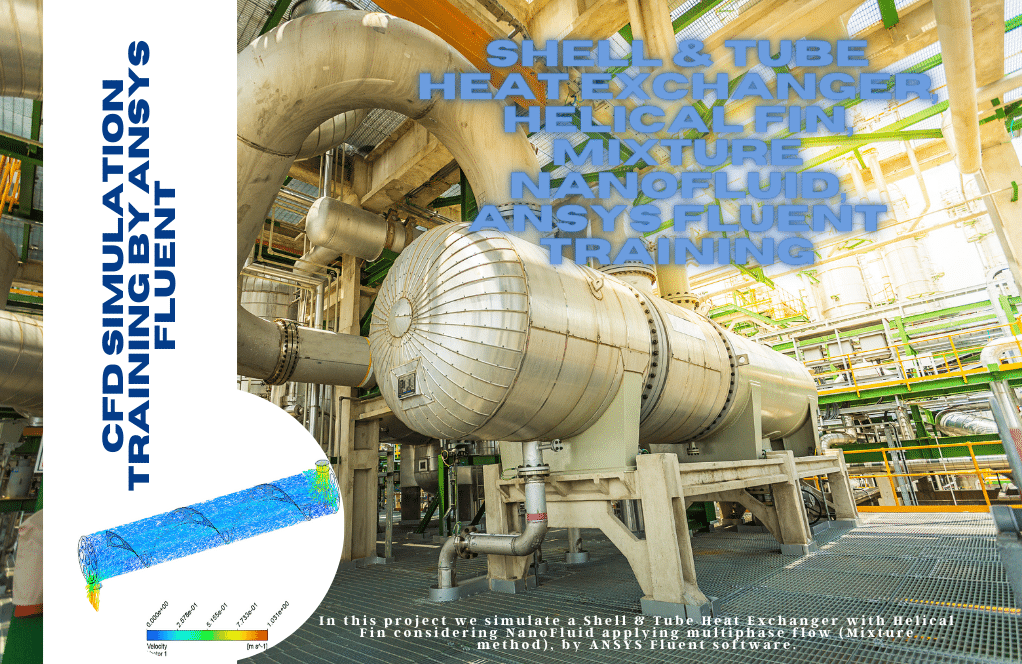CO2 Plume Dynamics in a Seabed Environment
$120.00 $60.00 Student Discount
To Order Your Project or benefit from a CFD consultation, contact our experts via email (info@mr-cfd.com), online support tab, or WhatsApp at +44 7443 197273.
There are some Free Products to check our service quality.
If you want the training video in another language instead of English, ask it via info@mr-cfd.com after you buy the product.
Description
CO2 Plume Dynamics in a Seabed Environment, ANSYS Fluent Tutorial
Introduction
This report presents a comprehensive Computational Fluid Dynamics (CFD) analysis of CO2 plume dynamics in a seabed environment using ANSYS Fluent. The study aims to investigate the complex multiphase flow behavior and species transport of CO2 injection into a seabed-like domain, simulating scenarios relevant to carbon capture and storage (CCS) or natural CO2 seepage.
The simulation geometry, designed using ANSYS Design Modeler, consists of a 2-D vertical cross-section representing a seabed and water column. The domain is a tall, narrow rectangle with dimensions optimized to capture the full extent of the CO2 plume rise. A small inlet at the bottom represents the CO2 injection point, while the top boundary simulates the water surface or an open boundary. The sides of the domain are likely set as walls or symmetry planes to contain the flow.
ANSYS Meshing was employed to generate a high-quality structured mesh comprising 306,278 elements. This mesh density provides sufficient resolution to accurately capture the multiphase flow dynamics, chemical reactions, and turbulence effects within the domain. The structured nature of the mesh allows for efficient computation and helps in resolving the complex flow patterns expected in the rising CO2 plume.
Methodology
A pressure-based, unsteady solver was employed to capture the time-dependent nature of the plume dynamics and the SST k-omega turbulence model was chosen to capture the turbulent nature of the flow.
The Eulerian multiphase model with implicit formulation for volume fraction parameters was used to handle the interaction between different phases. Surface Tension Force Modeling and Continuum Surface Stress were enabled to account for interfacial effects, and three phases were defined: a primary phase (mix), CO2, and air.
The Species Transport model with Finite-Rate/No TCI Turbulence-Chemistry Interaction was activated to simulate chemical reactions. Selected species included h2co3, hco3, h+, h2o, and co3, representing key components in CO2-water interactions.
CO2 was injected from the bottom boundary, simulating seabed seepage or injection. The simulation was run for 9 seconds, with results analyzed at 2, 5, and 9 seconds to observe the plume’s evolution.
Results
At 2 seconds, a distinct mushroom-shaped plume forms near the injection point, characterized by a high CO2 concentration at the center and lower concentrations at the edges. As the simulation progresses to 5 and 9 seconds, the plume rises further and begins to spread laterally, developing complex internal structures. These structures are likely due to the interplay of buoyancy, turbulence, and chemical reactions.
Initially, a high-pressure region forms near the injection point, as seen in the 2-second pressure contour. As the simulation progresses to 5 and 9 seconds, the pressure field becomes more diffuse, reflecting the plume’s expansion and its interaction with the surrounding water.
At 2 seconds, a high-velocity jet is observed at the injection point, driving the initial plume formation. As the simulation reaches 5 and 9 seconds, a complex velocity field develops, with higher velocities in the plume’s core and lower velocities at its edges, indicating the development of internal circulation patterns.
The volume fraction contours clearly illustrate the CO2 distribution within the water column. At 2 seconds, the mushroom-shaped plume is well-defined. By 5 and 9 seconds, the plume has risen significantly and spread laterally, with complex mixing patterns and internal structures visible, especially at the later time steps.
Key observations:
The CO2 plume exhibits characteristic buoyant jet behavior, including vertical rise and lateral spreading, which is consistent with expectations for submerged gas releases.
Internal structures within the plume suggest complex mixing and potential chemical reactions, which could have implications for local water chemistry and ecosystem impacts.
The pressure and velocity fields evolve dynamically, reflecting the changing plume morphology and its interaction with the surrounding water.
The simulation captures the transition from a focused CO2 jet to a more dispersed plume over time, providing insights into the spatial and temporal scales of CO2 dispersion in underwater environments.















Reviews
There are no reviews yet.